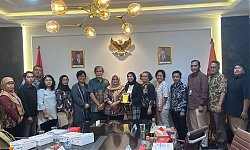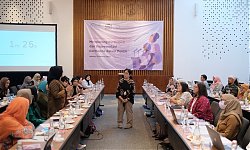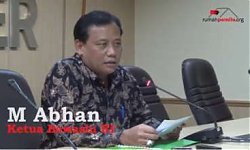Opportunity youth in the United States are demanding parliament not to cut state budgets for their community-targeted programs.
In the United States in 2017, there was about 11.5 percent of youth aged 16–24 were neither in school nor at work. Americans today refer to it as opportunity youth—young people who seek opportunities and provide opportunities. This more friendly term replaces the term disconnected youth (youth who are not connected with education/work) or the term 'vulnerable youth'.
“I support the use of the term opportunity youth compared to vulnerable youth. The reason young people are vulnerable is that they are not given opportunities in their communities,” said Humberto Palacios, a member of Opportunity Youth United, an organization that also advocates for the issue of youth dropping out of school and not working.
These youth were born and raised in a poverty line that is linked to the crime. The environment did not support them to continue their formal education at school. Although schools in the United States are free, these young people do not feel comfortable at school.
“Some people don't get serious attention at school. Class is too big. They are often bullied and sometimes get into fights that make them have to deal with the law and leave school. Others are just too smart and find school not challenging,” said Caitlin Johnson, Policy Reformers and Aligners division team at The Forum of Youth Investment– an organization whose mission is to connect policymakers with youth ideas and networks.
The figure of 11.5 percent is the lowest proportion in the last 10 years. The highest figure ever reached 14.7 percent in 2010 due to the impact of the economic crisis.
But the bad news is that this number is still relatively high. 11.5 percent means there are 4.6 million young Americans who are neither in school nor at work. Another bad news, in the same year, the 2018 state budget plan for programs for youth opportunity groups was about to be cut. For example, the Department of Labor's budget shrank by $2.5 billion—a 21 percent decrease from the previous year. Grants to states to provide workforce training to youth and low-income adults were cut significantly.
This condition moves the opportunity youth to gather strength, in order to thwart the budget cut plan, through political means. The state budget is decided through a political mechanism. So this movement also tries to fight it by political means—influencing the policymakers who are elected through elections to represent them.
Political way
Opportunity youth groups throughout the United States form strong coalitions and network with other groups. There are five significant organizations that facilitate this joint movement. The five organizations are Forum for Youth Investment/Opportunity Youth Network, YouthBuild USA, the Center for Law and Social Policy, the National Youth Employment Coalition, and Opportunity Youth United.
These youth opportunity organizations have formed a coalition to design the “Reconnecting Youth” campaign movement. Their joint advocacy agenda is to encourage the government to increase the budget for opportunity youth in the fields of education, training, employment, and public services in order to increase outreach to one million opportunity youth (from the previous 340,000) each year.
The result, not only thwarted the cuts, this movement actually succeeded in pushing parliament to increase the budget. When this campaign was initiated in the 2017 fiscal budget, the government allocated $3,216 billion for programs targeting youth opportunity. In the 2018 fiscal budget, the government budgeted $3,290 billion, an increase of $73 million. In 2019, the budget rose another $122 million to $3,338 billion.
Strategies
The success of this movement was influenced by two key approaches the organization took to parliamentarians. First, parliamentarians are given a logical understanding that budgeting in the youth opportunity group is a promising investment for the betterment of the district or state where they serve and work. This movement collects data from Measure of America on the number of opportunity youth groups in each constituency.
The movement also produced a one-page analysis by economists of the estimated number of people who would benefit if funding were increased and the resulting economic benefits for their districts and states. This information proved to be very important in meetings with MPs. As many as 91 percent of staff members of parliament find it useful if the organization that carries out the advocacy can provide information about the impact of regulation in their district or state. However, only 9 percent said they could get the information.
Second, parliamentarians are directly connected to the opportunity youth groups so that there is a strong emotional bond between the two of them. Linking opportunity youth groups with parliamentarians is a key factor in the success of this movement. There is a mutually beneficial trade-off between opportunity youth and parliamentarians. Young people have space to share stories about how their lives have changed after joining the program. Meanwhile, parliamentarians get the space to build bonds with their constituents that can help them to be re-elected in the upcoming elections.
To approach MPs who are not in the budget agency, this movement initiated the “Dear Colleague” program. The program asks MP champions who are not on the budget agency to sign a “Dear Colleague” letter. Key people involved in this program are Jimmy Gomez from the Democratic Party and Steve Knight from the Republican Party. Letters containing requests for budgeting on these specific programs were sent to his colleagues in the budget agency.
Not only letters, another tactic used to reach as many members of parliament as possible is by calling and using technology. In the key weeks when lawmakers are about to decide which letter they will sign, the movement sends individual emails to hundreds of lawmakers using the Quorum software. The movement also assigned three staff to work full-time calling as many congressional offices as possible. As a result, 24 lawmakers and 12 senators signed the letter “Dear Colleague.”
Opportunity Youth United is an organization that facilitates the formation of this relationship between opportunity youth and members of parliament. This organization arranges an alumni meeting of the state-funded opportunity youth program. They are involved in meetings with members of parliament. This movement also launched the Advocacy Academy as a program designed to make opportunity youths better prepared to interact with policymakers. Participants in this academy learn the tools needed to advocate for an issue and take virtual training to improve technical skills.
Even though it has been successful in the first year, this movement will still continue. This is because the budget for the youth opportunity program is still considered insufficient. The budget increase that occurred in 2018 to 2019 fiscal year could only reach an additional 7000 people. Even if the parliament fulfills the demands of this movement, there are still three million youth opportunities that have not been touched.
The years ahead are said to be difficult years. Because a divided parliament will renegotiate state spending with possible budget cuts for programs targeting opportunity youth and other vulnerable groups.











